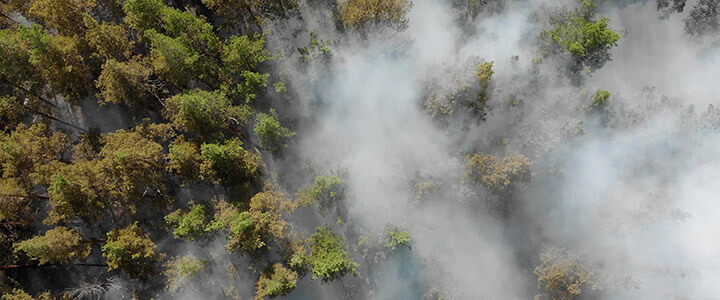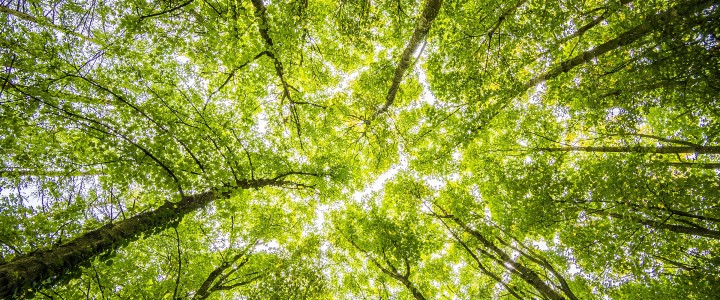Preservation of Sumatra Rainforest in India
Around 70 million years ago, the Asian landmass was struck with India which resulted in the formation of Himalayas and later on the associated thrust created the Sumatra’s Barisan Mountains that stretches the lengths of Sumatra. Once a thriving and highly diversified rainforest, is now facing danger of being vanished from the face of the Earth.
The Sumatran Rainforest is known to be the home of rarest plant and animal species. This is probably the only place where tigers, elephants, rhinos, and orangutans inhabit together. But that’s not all, some of the lesser-known animals such as sun bear, proboscis monkey, cloud leopard, etc. take shelter in this rainforest.
However, over the years, the mindless acts of human intervention have impacted the natural flora and fauna of Sumatran rainforest. Now, this beautiful ecosystem faces massive challenges as the state of declining rain forest is inching forward each day.
Read more to learn about the Sumatra Rainforest and preservation efforts taken to save it.

The Challenges Faced by Sumatra Rainforest
The Sumatra Rainforest faces the challenges of illegal or commercial logging activities, oil palm plantations and other human interventions. Rampant poaching also adds to the number of threats that the wildlife of Sumatran Rainforest faces.
The Leuser ecosystem in Sumatra is the only habitat where orangutans, tigers, rhinos, and elephants coexist, but over the years, the area is ruthlessly burned and ravaged by palm oil companies for its plantation. Between the years 2015 and 2017, this ecosystem lost over 22,000 hectares of forest which has caused endangerment of several species.
The Sumatran Rainforest is paying a high price for the extremely high demands of the world for palm oil. Despite the submission of several summits, the status for palm oil plantations hasn’t really changed to tame the challenge that the Sumatra rainforest faces.
Deforestation due to commercial and illegal logging is yet another big challenge that the Sumatra rainforest deals with. Ever since 2017, West Sumatra alone has lost over 31,367 hectares of natural forest. Currently, the area only has 44% of forest from the total land area. This sharp decline is primarily due to logging activities as many logging companies have received new permits to clear new land for plantations.
Last but not the least, merciless poaching of wildlife has further contributed to the loss of Sumatra rainforest. According to a survey conducted by the leading NGO TRAFFIC, the activity of poaching for the mere purpose of trade is responsible for 80% deaths of Sumatran tigers. Similarly, many other wildlife species have succumbed to the savage activity of poaching and are eventually pushing the Sumatra rainforest to the point of extinction.
Why Sumatra Needs to Be Saved?
The Sumatra spans across 2.6 million hectares approximately. Both the wildlife and terrain of Sumatra are uniquely diverse. The rainforest is centred on the Barisan Mountain Chain whereas the Leuser ecosystem falls steeply on the west side into the Indian Ocean. On the east side, it gradually slopes down into the Sunda Strait.
So, the Sumatra basically has six eco-regions, right from the high altitudes to the lowlands rain forests that meet with coastal swamps. Such a massively diverse ecosystem favours different types of wildlife. In fact, Sumatra is home to 174 mammal species, 191 reptile species, 450 bird species, 52 amphibian species and more than 4,500 plant species.
Most significantly some of these species are found exclusively here and nowhere else in the world. Moreover, as per the World Heritage Convention, as much as 92 endemic species reside within the boundaries of Sumatra.
The decline of such a diverse ecosystem would be a great loss for Earth and that is why all the measures need to be taken to save the Sumatran rainforest and all of Sumatra.
Preservation Efforts of Sumatra Rainforest
There are many organizations around the globe that have come forward to make efforts to save the Sumatran Rainforest. The local inhabitants of Indonesia have also formed associations to preserve the diverse ecosystem of Sumatra.
Conservation International and Worldwide Fund for Nature have progressively collaborated with different organisations from different industries with a strong commitment in environmental protection. For many years, these organisations have been conducting a protection program to preserve the rainforest in Sumatra, India.
Some of the accomplishments of this international non-profit organization are:
- Partnership with the Indonesian government to develop Tesso Nilo National Park to save critically endangered tiger and elephant habitat.
- Establishing the first-ever agreement to protect Sumatra’s natural forests.
Additionally, some home-grown organisations such as Sumatra Rainforest Institute are also taking up drastic actions to speed up the preservation efforts and make the world aware of the importance of Sumatran rainforest preservation.
Bottom Line
While there’s a bulk of actions ahead to preserve the Sumatran Rainforest, there seems to be a silver lining for the preservation of this beautifully diverse ecosystem. Nevertheless, more rigorous measures need to be taken to achieve the mission of preserving the Sumatra Rainforest.
About Giti Tire
Singapore-based Giti Tire Group originated from a tire business back in 1951. The company is the worldwide manufacturer and producer of a broad range of tire products. It works with an assortment of motorsports teams, tire dealers, major original equipment vehicle manufacturers, auto-service outlets, and consumers in more than 130 countries worldwide. The company has eight production centres across three countries including a newly opened tire factory in South Carolina, USA.
Giti constantly cooperates with renowned organizations to promote an ecological environment. In addition to that, CI and Giti are cooperating in fresh and seawater protection, reforestation, planting and prevention of zoonotic diseases.




















